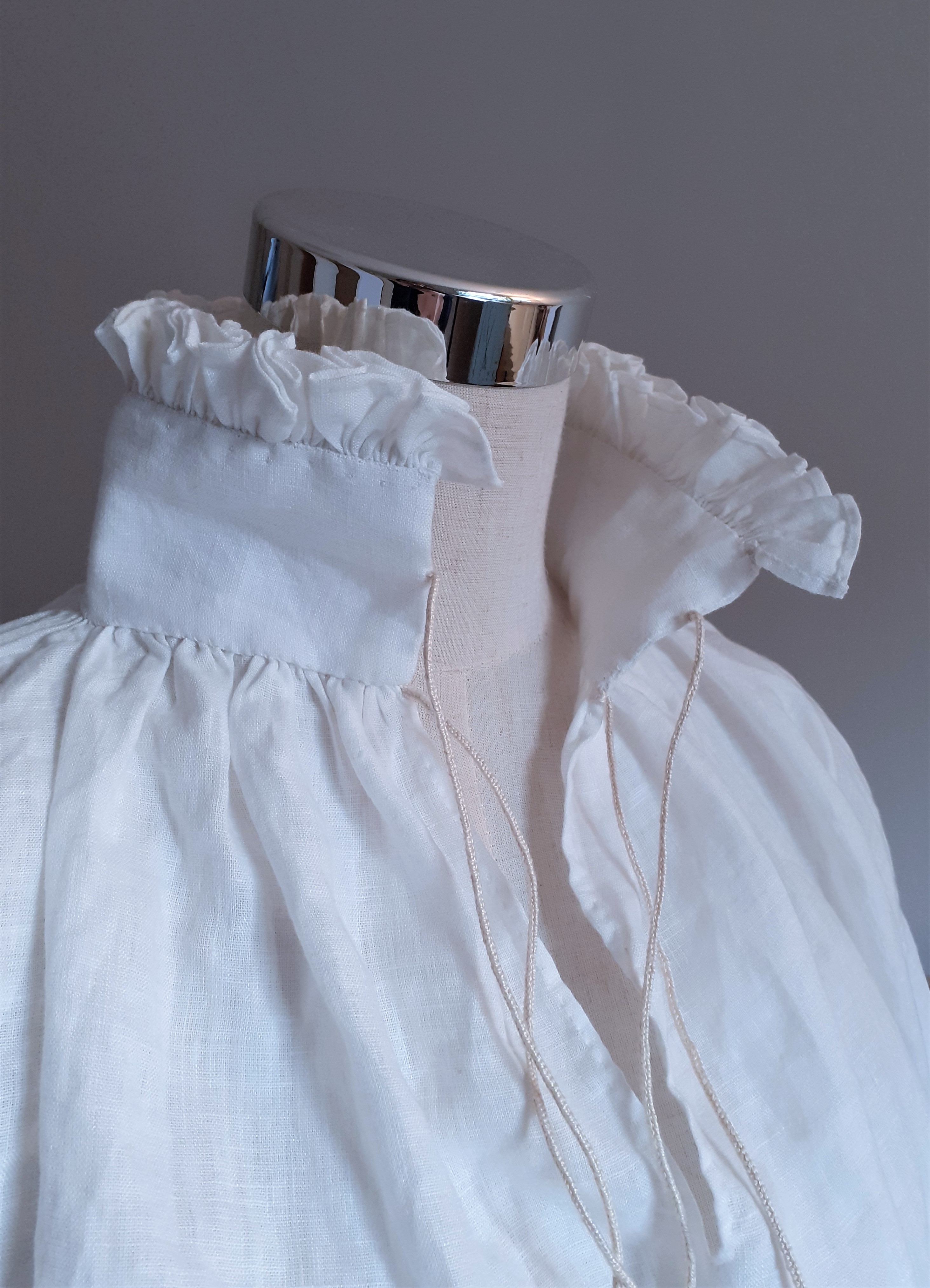This post is a collab with Korps and contains advertisement for plantdyes and fabrics
I wanted to put down what I have learned about coloured garments and fabrics from the Viking age, so you may use it as a guide when deciding on the colours for your viking outfit.
Colour pigments available during the Viking age according to Ewing in “Viking Clothing”: blue (woad), lichen (purple), red (madder) and yellow (not identified) but also…
Blue could range from soft, muted grey-blue, watered blues, to saturated deep blue tones. The same goes for other colours; white wool, lots of dye and a skilled dyer will get you deeper and more even colours than mixed wools, and so on. The range of red is very wide; orange hues, muted brown-red tones, to saturated reds and cold red such as wine red. Lichen purple range from violet and almost lavender tones to purple hues with red and pink tones. Yellow dyes can be made with a great number of different plants all the way from a beige soft tone to brilliant yellows, or light green tones.
Walnut shells found in Hedeby and Oseberg gives you rich reddish browns, or warm browns.
Natural colours from the sheep’s wool ranged from white to muddled white tones, browns and dark browns. Black fabric would not have been as black as the fashionable 16th c fabrics, but more brown-black from the sheep’s natural colour.

By sorting the wool into different qualities and colours you can make fabric that is white and therefore gives a very brilliant colour when dyed, but also mottled fabrics, or striped ones by weaving with threads of different colours. Some weaves from the Herjolfnes finds (medieval period) are made this way; by having one colour in the warp and one in the wheft.
Different ways of dyeing: the wool, the spun yarn or the finished fabric. Dyeing spun yarn and then weaving gives you a fabric that is a bit mottled, but was also used to make patterned fabrics. Dyeing the woven fabric make sure you get the exact amount you need for a garment in as even a tone as possible. Dying the wool before spinning is mentioned in later sources from the medieval period, and one madder-red example was found in viking settlements in York.
Many people probably wore undyed clothing in natural beige, browns, dark brown tones, woven in an even tone, mottled hues or patterned by the use of different natural shades during weaving.
Muted and soft colour tones, as well as mottled hues, were easier to make than deeply saturated colours and thus cheaper. Plants used for dyeing have been found growing in the same regions as the viking settlements, as well as being imported as raw materials, or already coloured fabrics.
Brilliant red and blue tones are being mentioned as high-status markers worn by royalty and their followers or being important gifts. Especially blue seems to have been a popular colour with lots of examples from finds and written texts. Old sagas and literature describe people donning coloured garments (a blue kirtle for example) before going out on important business, so if you are planning on attending an important meeting, a great feast or avenging a friend, you could always wear your best red cloak or blue kirtle for the occasion!
Linen was unbleached, or bleached. A linen shirt being “white as snow” was a status marker clearly standing out to those around the wearer. A finer weave and brighter white were seen as superior and would give higher prices.
(There are examples of dyed linen fabrics in red and blue colours, but they are uncommon so I will not go into details here.)
What should you look for when buying fabric?
Vibrant and saturated: blue and red were popular but expensive, if you would like to create a high-status viking these are good choices. Combine these with high-status jewelry, good quality shoes and white linen for undergarments.
Muted, soft shades: if you want to create everyday garments, softer tones are better: soft blues, reds, yellows, dyed browns, but also all in-between hues that are hard to describe in text: rust-red, red-brown, yellow-greens, light purple-pink hues, warm tones between yellow-orange-brown-apricot. Combine with unbleached, half bleached or almost white linen underwear.
Uncoloured wools are a good choice for the everyday clothes of people living farther from cities and other trading areas. For underwear, unbleached or half bleached linen, or another layer of wool fabric will do nicely. (Finds from Norway and Gotland indicates that an all wool outfit were more usual there).
Sometimes it can be difficult to find good fabric choices, so here are some examples from Korps that I would recommend. Avoid the darkest reds/greens/blues/turquoise and go for the softer shades. The beige/natural coloured wool is a great example of an undyed fabric choice.
I always order fabric samples to be able to see and feel the fabrics for real before buying (you should do it too, they have lots of samples!) It also gives you the opportunity to match shades with each other for a great outfit. For more on that subject; check out this post.
Korps have plant dyes if you want to try plant dying yourself, along with a free booklet (in Swedish) with information and formulas. Look for fabrics that are sold for plant dying, or ask for those, to avoid already coloured or treated fabrics.
Remember: not all plant dyeing available today was used during the Viking age, some are imports from a later date, or was not effective enough without chemicals. If you want to learn more about plant dyes and colouring there’s much to read on the internet, even at Wikipedia.







































